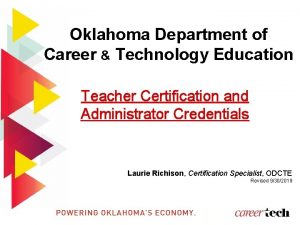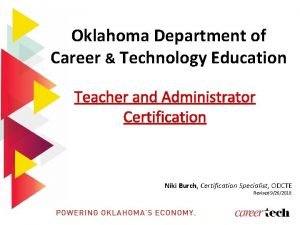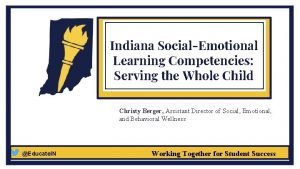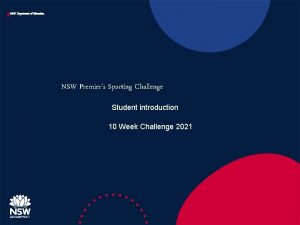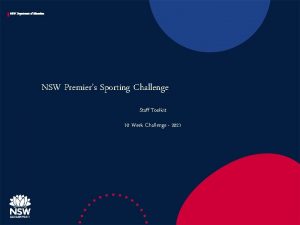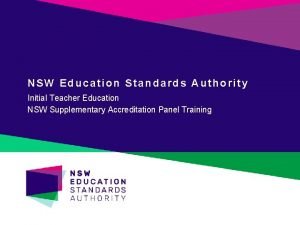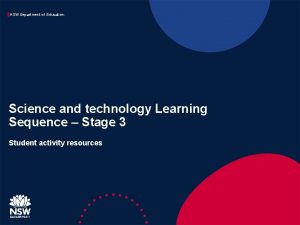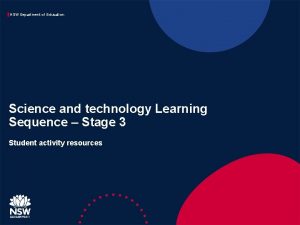NSW Department of Education Science and technology Learning









- Slides: 9

NSW Department of Education Science and technology – Learning Sequence – Stage 3, Living world Student activity resources

NSW Department of Education Stick-bird investigation Student resource

NSW Department of Education Hands on activity Stick-bird investigation (investigate survival advantage of adaptations) 3

NSW Department of Education Instruction • The aim of this investigation is to investigate how birds’ 'beaks' have adapted to suit their environment. • For this investigation, you will pretend you are a hungry stick-bird. Use different types of 'beaks' to pick up as many 'food items' as you can. This investigation should be done with a partner. Materials You will need the following: • ‘food items’ (for example you could use pasta, craft match sticks, paddle pop sticks, rice bubbles, popcorn, rice, lollies) • 'beaks' (for example you could use tongs, tweezers, skewers, small thin branches that have fallen from a tree, pliers, scissors, chopsticks) • bowls or other types of containers to put the ‘food items’ in • container to put all the 'beaks' in • stop-watch or timer • ruler or tape measure • 1 metre square area • student workbook • a clipboard or book to put the copy of slide 8 so that it is easier for you to record 4 Images from Pixabay

NSW Department of Education Collect resources Preparation • Set up your 'beaks' and ‘food items’ • Next, measure out a 1 m x 1 m square. In science, this is called a quadrat. A quadrat helps make sure that each round of the investigation a fair test. This way, you can compare your results with class peers and family members once you have completed the investigation. Use a tape measure, rope, string, sticks or pegs to mark the corners and borders of your 1 m x 1 m square quadrat. The photos on the next slide will show you how to do this. • Before you begin your investigation, predict which ‘beak’ will be the most successful with picking up the most food. Explain your prediction. 5

NSW Department of Education Procedure 1. Scatter one type of food item over the quadrat. 2. Ask a friend or adult to start timing and remove the blind-fold. 3. Give stick-bird 30 seconds to pick up as many 'food items' as possible. 4. Record the number of ‘food items’ next to the type of ‘beak’ used (data) on slide 8 of this Power. Point. 5. Repeat steps 1 -5 three more times. 6. Analyse your data and then complete the questions in your student workbook 6

NSW Department of Education How to make a quadrat Collect a tape measure or ruler, some rope or string and four sticks or skewers. Materials Marking out the quadrat 1 metre square quadrat 7 Marking out the quadrat

NSW Department of Education Results In this table you should change the food and beak items to what you are using. This is an example of what your data table should look like. pasta tweezers tongs spoons scissors 8 seeds lollies

NSW Department of Education Analyse the data Answer these questions in your student workbook. 1. Check your prediction. Was it correct? Explain what went well for your prediction to be true. If it wasn’t correct? Why? 2. What patterns or trends could you see after you analysed the data? 3. Which type of beak picked up the most food? Why? 4. Which type of beak wasn’t as successful? Why? 5. What didn’t work well in this investigation? 6. What would you change in this investigation so that there were more successes? 9


